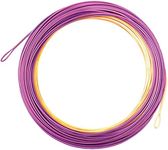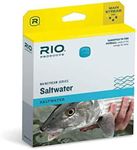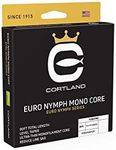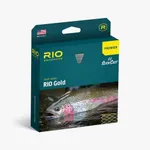We Use CookiesWe use cookies to enhance the security, performance,
functionality and for analytical and promotional activities. By continuing to browse this site you
are agreeing to our privacy policy
Best Fly Lines
From leading brands and best sellers available on the web.#2

AIRFLO
Airflo Superflo Power Taper Floating Fly Lines 6WT
View Product
#3

Scientific Anglers
Scientific Anglers Type III Frequency Full Sinking Line, Dark Green, WF- 6-S
View Product
#4

Rio
RIO Products Elite Salmon/Steelhead Fly Line, Front Taper for Single Handed Roll and Spey Casting, Slick Coating, WF8F
View Product
#5

Cortland
Cortland Line 444 Classic Peach 90FT Fishing Line 4WF
View Product
#6

Scientific Anglers
Scientific Anglers Amplitude Smooth Infinity Fly Line (Camo, WF-6-F)
View Product
#7

Rio
RIO Products Fly Line Mainstream Saltwater Wf8F, Blue
View Product
#8

Cortland
Cortland Euro Nymph Mono Core Fly Line (Level .022) Chartreuse
View Product
#9

Rio
RIO Products Fly Line Mainstream Type 6 Full Sinking Line WF6S6, Black
View Product
#10

Scientific Anglers
Scientific Anglers WF-5-F Frequency Floating Trout Line
View Product
Buying Guide for the Best Fly Lines
Choosing the right fly line is essential for a successful and enjoyable fly fishing experience. The fly line acts as the connection between you, your rod, and the fly, and it plays a major role in how well you can cast, control, and present your fly to the fish. Understanding the key specifications of fly lines will help you match your equipment to your fishing style, target species, and the environments you plan to fish in. By focusing on these important features, you can select a fly line that enhances your performance and makes your time on the water more productive and fun.Line WeightLine weight refers to the thickness and mass of the fly line, usually rated on a scale from 1 to 14. This is important because it needs to match the weight rating of your fly rod and reel for optimal casting and performance. Lighter lines (1-4) are best for small fish and delicate presentations, often used in small streams or for panfish and trout. Medium weights (5-7) are versatile and suitable for larger trout, bass, and general freshwater fishing. Heavier lines (8-14) are designed for big fish, saltwater species, or casting large flies. To pick the right line weight, consider the size of fish you’re targeting, the type of water you’ll fish, and the flies you plan to use.
Line TaperLine taper describes how the thickness of the fly line changes from one end to the other. The most common types are weight-forward, double taper, and level taper. Weight-forward lines have most of their weight near the front, making them easier to cast longer distances and handle wind or larger flies. Double taper lines are symmetrical and offer delicate presentations, ideal for short to medium casts and precise control. Level taper lines are uniform in thickness and are less common, usually for specific techniques. Your choice should depend on your casting style, the distance you need to cast, and how delicately you want to present your fly.
Line DensityLine density determines whether the fly line floats, sinks, or does something in between. Floating lines stay on the surface and are great for dry flies, topwater fishing, and most beginners. Sinking lines or sink-tip lines are designed to get your fly down to deeper water, which is useful for fishing below the surface or in fast currents. Intermediate lines sink slowly and are good for fishing just below the surface. Choose the density based on where in the water column you want your fly to be and the type of fishing you plan to do.
Line ColorLine color can affect both your visibility and the fish’s ability to see the line. Brightly colored lines are easier for you to see, which helps with tracking your cast and detecting strikes, but may be more visible to fish in clear water. Subdued or camouflaged colors are less likely to spook fish but can be harder for you to track. Pick a color that balances your need for visibility with the water conditions and the wariness of the fish you’re targeting.
Line Coating and MaterialThe coating and material of a fly line affect its durability, slickness, and how it performs in different temperatures. Softer coatings are better for cold water, while harder coatings resist sticking and are better for warm climates. Some lines have special coatings for extra slickness, which helps with longer casts. Consider the typical weather and water conditions you’ll fish in, and choose a line material and coating that matches those needs for the best performance and longevity.





